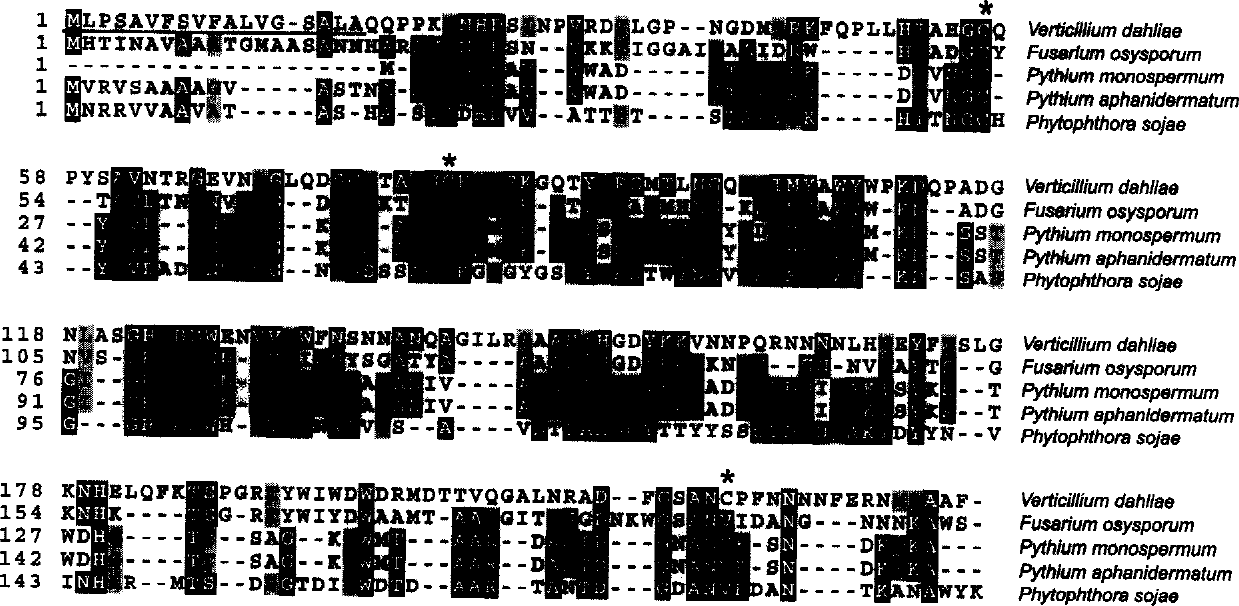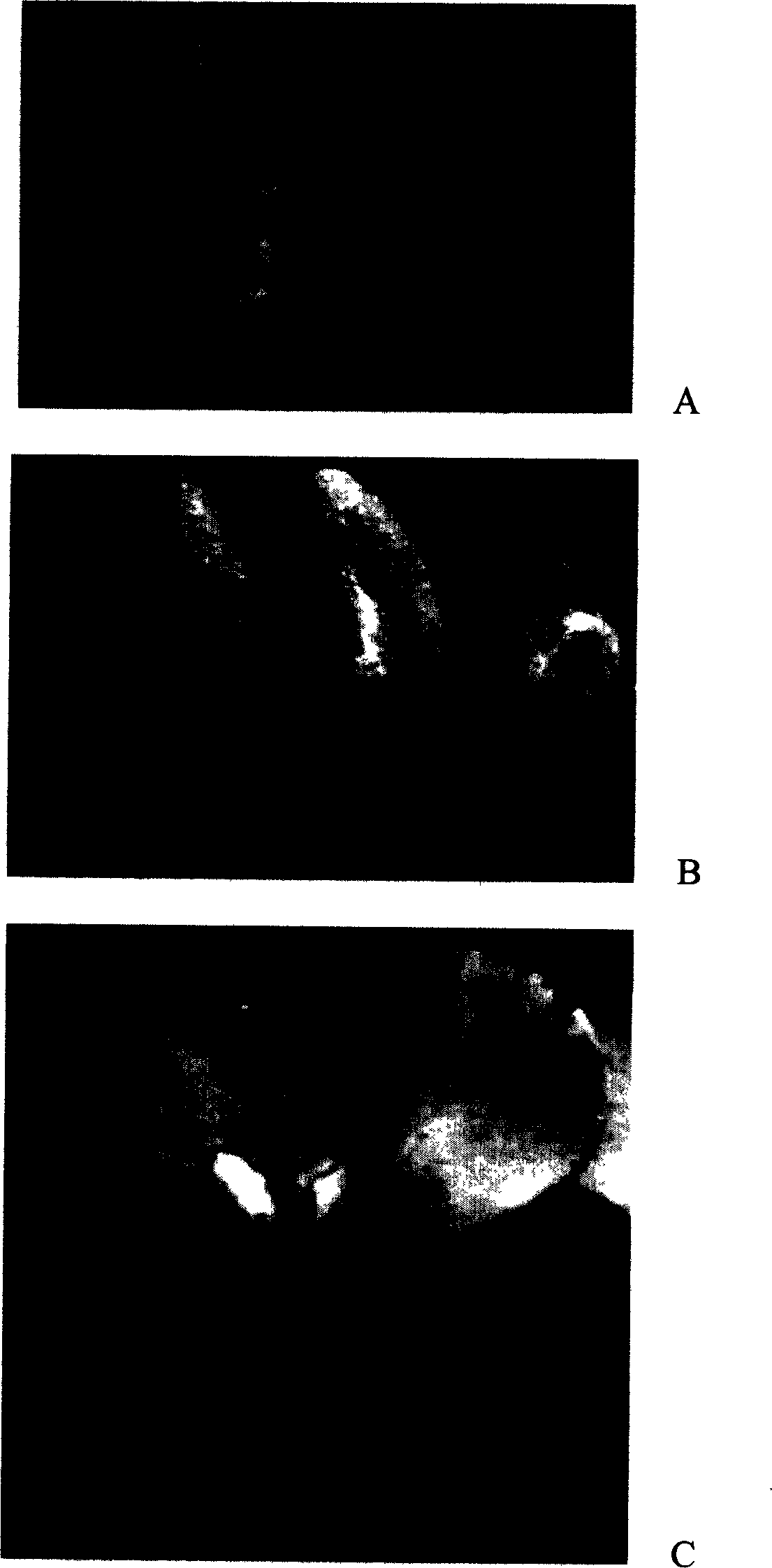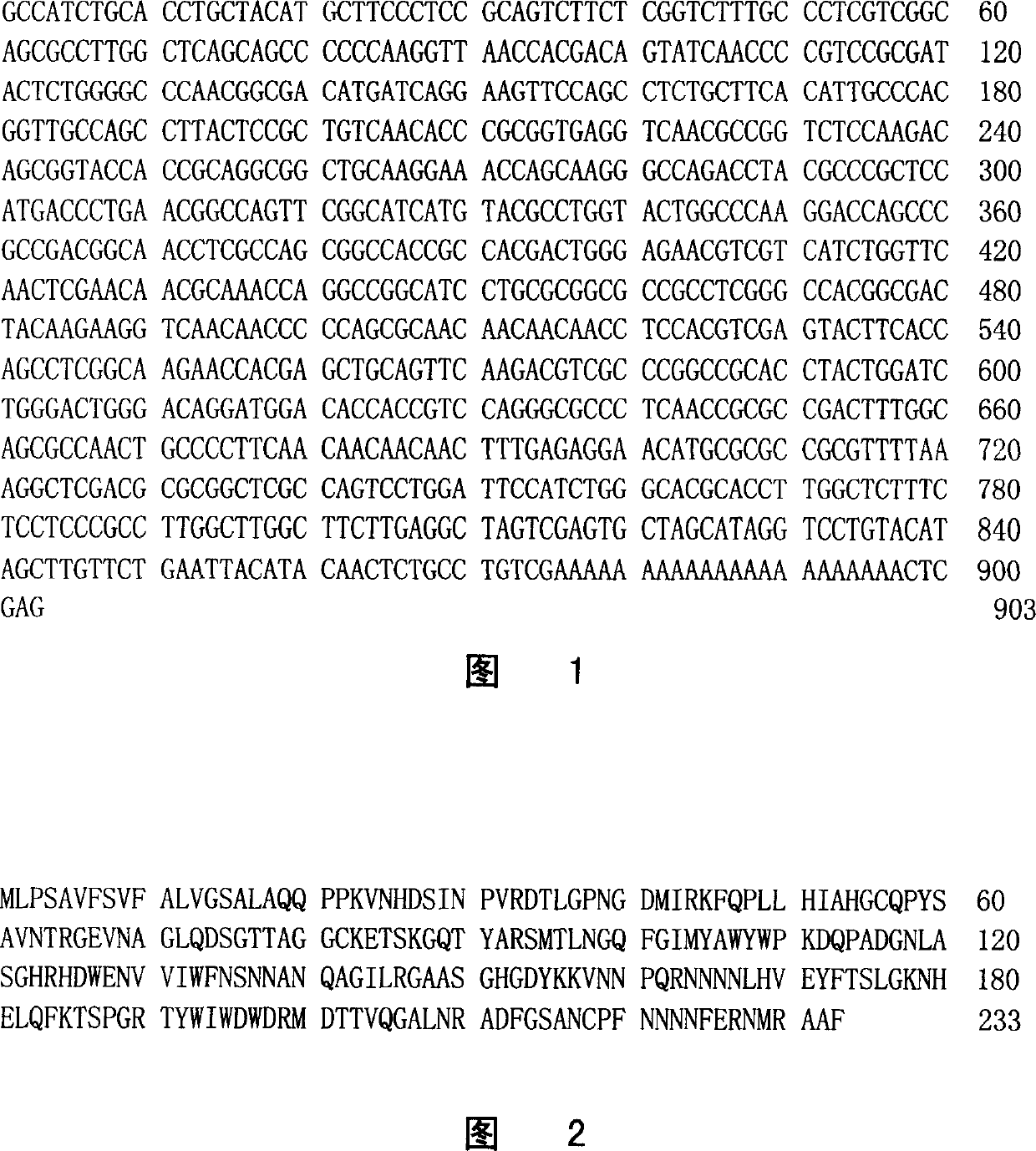Cotton verticillium wilt germ secreted exciton gene and its application
A residue and amino acid technology, which is applied to the gene of non-specific Verticillium dahliae elicitor and its application field, can solve the problems such as the secretory elicitor gene of Verticillium dahliae that has not been reported.
- Summary
- Abstract
- Description
- Claims
- Application Information
AI Technical Summary
Problems solved by technology
Method used
Image
Examples
Embodiment 1
[0079] Construction of cDNA library of Verticillium dahliae and release of phage
[0080] 25°C, 150rpm shaking suspension culture Verticillium dahliae (Verticillium dahliae) for 2-3 weeks, when the secretion of its secreted protein reaches the peak, collect the bacteria as material, extract total RNA, use the library construction kit of Stratagene company, A cDNA library of Verticillium dahliae was constructed by the following method.
[0081] A certain amount of the synthesized first- and second-strand cDNA and samples after fractionation were taken for electrophoresis to ensure the quality of cDNA, especially after fractionation, components containing cDNA below 500bp were not used, so as not to affect the connection of large fragments of cDNA efficiency. After the cDNA was connected with the ZAP express vector (Stratagene Company), it was packaged by packaging protein to obtain about 1.0×10 6 Original library of independent clones of Pfu.
[0082] Will XL 1 -Blue compet...
Embodiment 2
[0086] Sequencing and analysis of ESTs sequences
[0087] Single clones were picked and cultured overnight in a 96-well plate with shaking. Plasmids were extracted, and samples were electrophoresed to detect the quality of the plasmids. The T3 primer was used as the sequencing primer and sequenced on a Megabase automatic sequencer. The obtained 1300 DNA sequences were compared in Genebank, and according to the comparison results, they were classified according to the possible functions of the ESTs sequences (the expected value was greater than e-3).
[0088] result:
[0089] Among the 1300 ESTs sequences, there are 35 sequences that determine protein fate; 12 sequences related to protein synthesis; 5 sequences related to cytoskeleton; 24 transport-related proteins; 71 sequences related to signal transduction; 10 related sequences; 52 sequences related to self-defense and host infection; 5 sequences related to DNA metabolism; 17 sequences related to energy metabolism; 229 se...
Embodiment 3
[0096] Prokaryotic expression and purification of VdNEP gene
[0097] (a) Construction of expression vector:
[0098] Forward primer VdNEPEcoRF 5' gaattccagcagccccccaaggtt 3' (SEQ ID NO: 3; containing EcoR I restriction site) and reverse primer VdNEPNotR 5' gcggccgcttaaaacgcggcgcgcatg 3' (SEQ ID NO: 4; containing NotI) for the full-length sequence of VdNEP gene cDNA Restriction site), using the extracted Verticillium dahliae mRNA as a template, after RT-PCR amplification with Pfu polymerase (removing the predicted signal peptide sequence), digestion, and ligation into the pET32a(+) plasmid (Novagen Company), the heat shock method was transferred into Escherichia coli DH5α, positive clones were selected, plasmids were extracted by shaking the bacteria, and verified by sequencing.
[0099] (b) Induced expression:
[0100] The plasmid obtained in step (a) was transformed into Escherichia coli BL21 by heat shock method. Select positive clones and culture them in LB medium conta...
PUM
 Login to View More
Login to View More Abstract
Description
Claims
Application Information
 Login to View More
Login to View More - R&D
- Intellectual Property
- Life Sciences
- Materials
- Tech Scout
- Unparalleled Data Quality
- Higher Quality Content
- 60% Fewer Hallucinations
Browse by: Latest US Patents, China's latest patents, Technical Efficacy Thesaurus, Application Domain, Technology Topic, Popular Technical Reports.
© 2025 PatSnap. All rights reserved.Legal|Privacy policy|Modern Slavery Act Transparency Statement|Sitemap|About US| Contact US: help@patsnap.com



